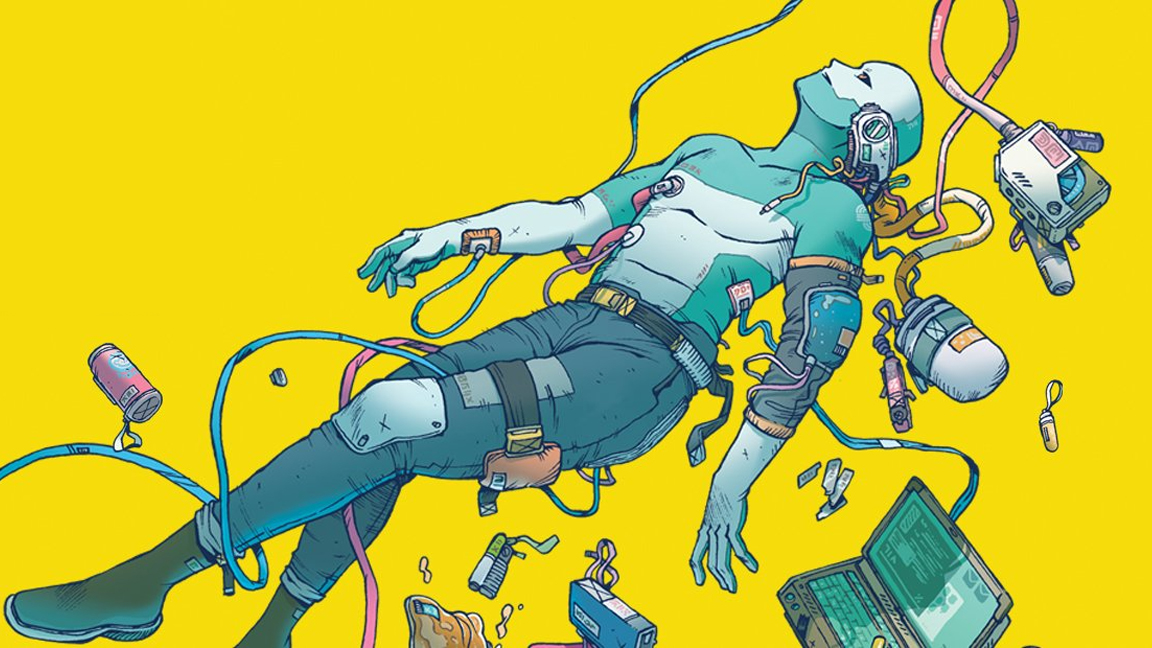
Citizen Sleeper 2: Starward Vector is the upcoming sequel to the hit indie game from 2022; that first game reached more than a million players. But what fans of the two games might not realise is that the solo indie developer behind the games, Gareth Damian Martin, has barely written a line of code for either of them.
Gareth’s background is in illustration and writing, but messing around with Twine - a text-based game development software - as a way to write experimental fiction led to them creating In Other Waters, a 2020 game all about analysing the flora and fauna of alien seas. “I had the idea while I was on holiday in Greece, and I was swimming in the sea every day,” Gareth remembers.
Gareth had little programming or animation experience, so instead they concentrated on their strengths. “I knew that I could write, and I knew that I could do graphic design, so I was like, ‘Well, what kind of ideas can I do within that space?’ And so a UI game, like In Other Waters, seemed like a really obvious decision.” The form perfectly reflected the content: the artificial intelligence you play as in the game can only experience the ‘real’ world outside through text and interfaces.
Citizen Sleeper 2 and its no-code roots
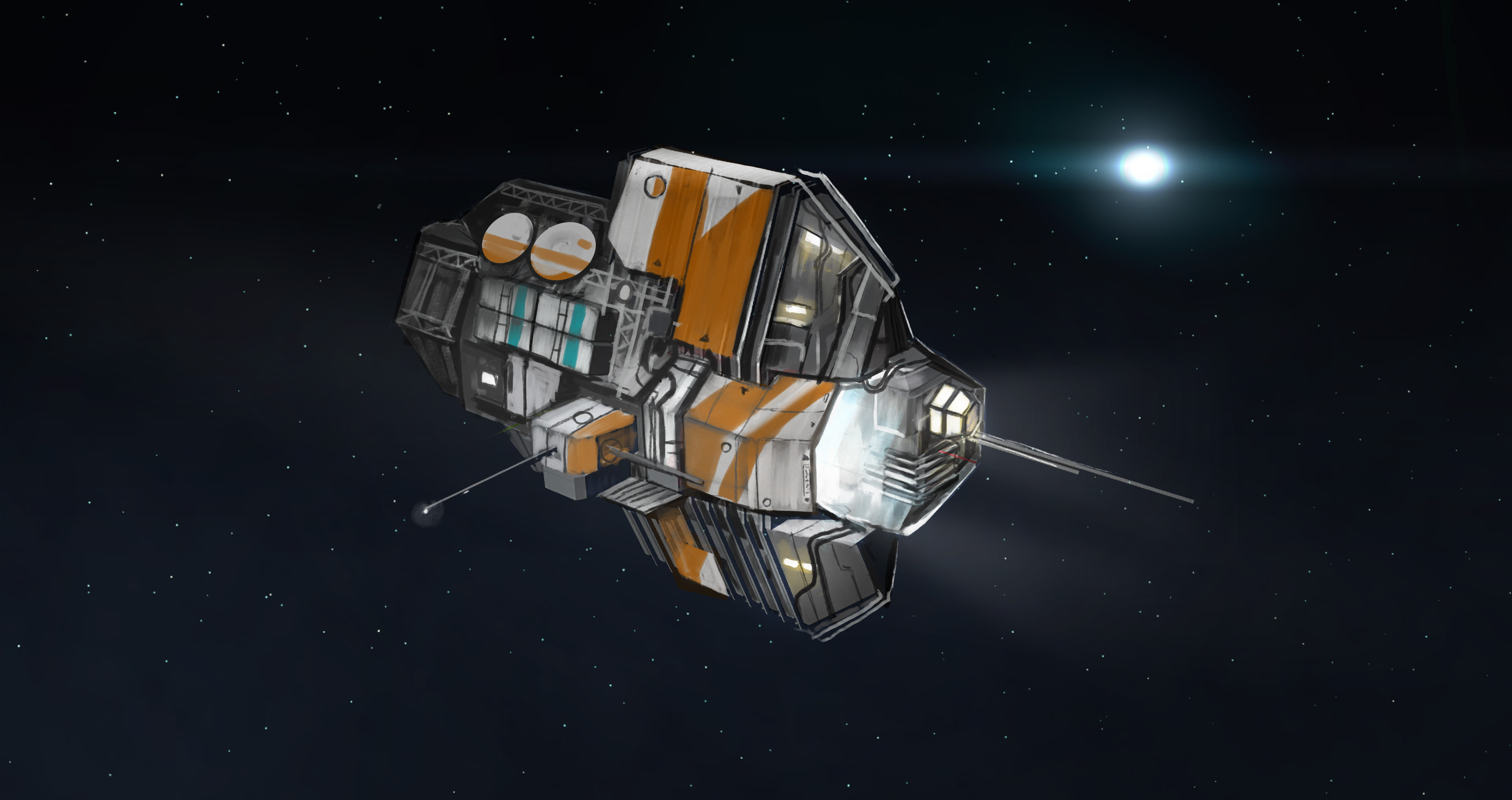
Along the way, Gareth discovered PlayMaker, a flow-chart-like visual-scripting tool for Unity. “That immediately opened up game development for me,” they say, allowing them to craft a prototype in a couple of weeks. The experience was revelatory. Gareth likens it to “building a machine that is a series of tanks and pipes, something that feels physical and visual”: a far cry from the scary idea of coding from scratch.
Gareth has continued to use PlayMaker for Citizen Sleeper and its sequel, and has barely written a line of code in all that time. “I do work with a programmer on porting and things,” they acknowledge. “I think it’s hard to make a video game without ever having anybody [write] a piece of code. But also, thanks to the Unity Asset Store combined with visual scripting and things like this, [game development] is definitely more accessible than it's ever been.”
But it can also be a little worrying. “It’s quite scary to be totally reliant on a piece of software,” Gareth says, referencing Unity’s “slight wobble” of 2023. “But there's actually a lot of visual-scripting solutions out there, and Unreal has a built-in visual-scripting solution called Blueprints which is quite popular, so I think I'd be okay if it died.”
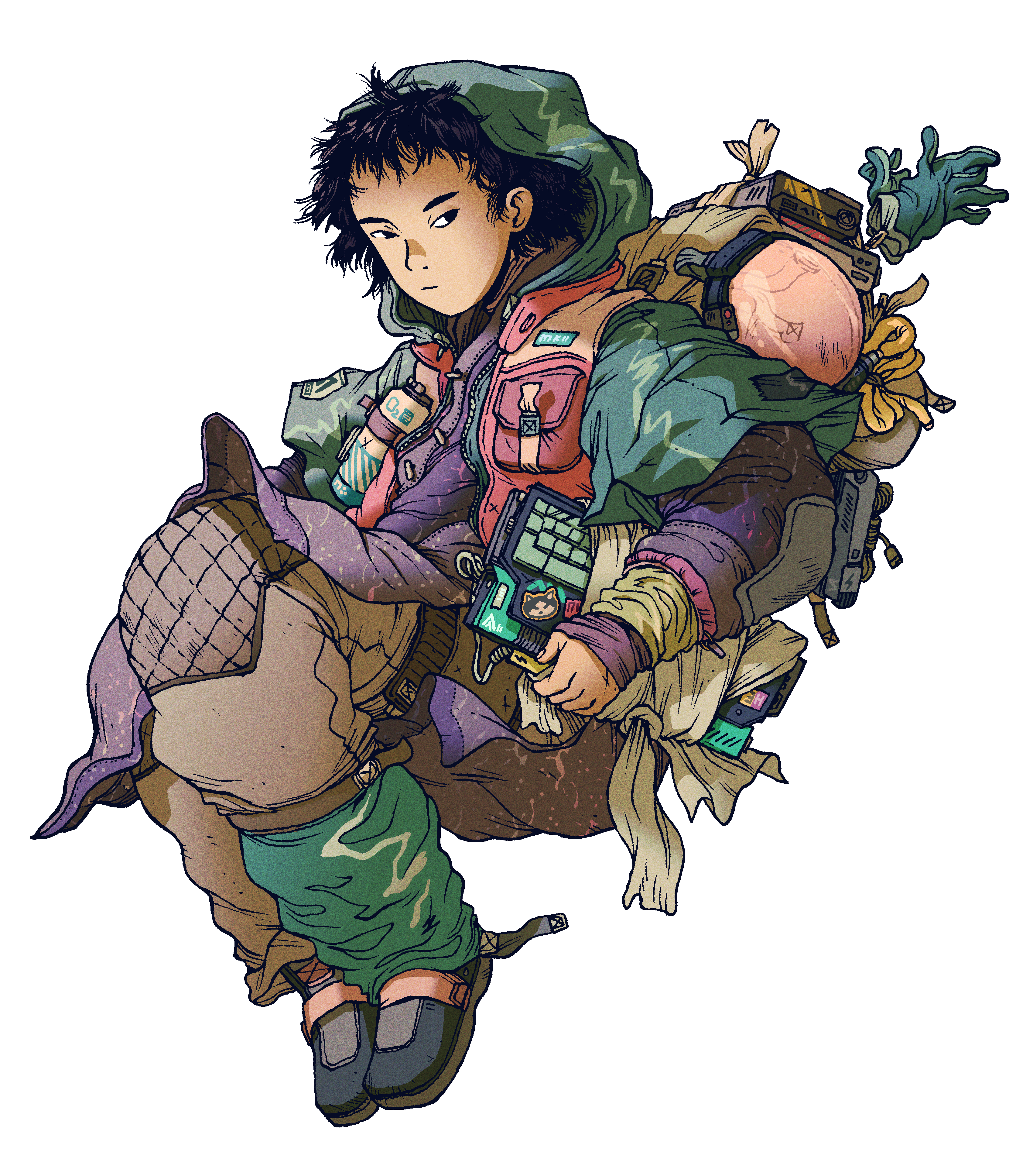
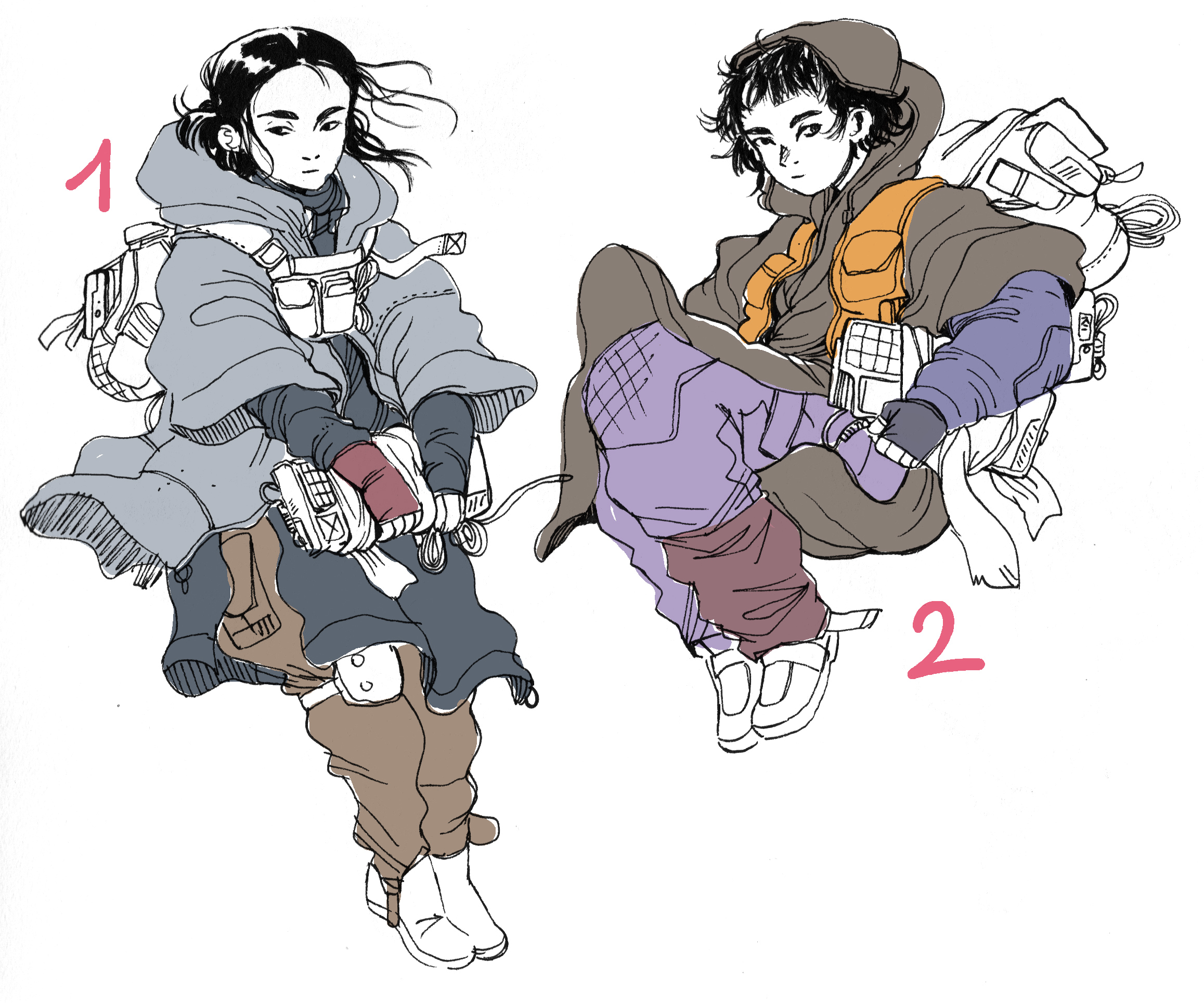
In addition to PlayMaker, Gareth used the rather dull sounding Dialogue System for Unity on Citizen Sleeper, which, they say is “incredibly good” despite its unpromisingly generic name. “[It’s] famously used in Disco Elysium, and it's a really powerful tool.” But one of Gareth’s favourite tools is the narrative scripting language ink, developed by inkle, the studio behind 80 Days and A Highland Song (games that made my best indie games list). “When I say I've never written a line of code, I have written ink type code, which is very, very simple,” Gareth says. “It's like a code version of Twine.”
Gareth says ink was “totally essential” for Citizen Sleeper 1 and 2 when it came to creating branching storylines, allowing them to immediately check what the player knows at any point in the game. “Which is the most useful thing you could possibly imagine. Just being able to see, like, did they say that to them? Or have they heard about this piece of information?” Given the scope of Citizen Sleeper 2, this was invaluable: the sequel runs to roughly 250,000 words, making it more than twice the size of the original (which ran to around 120,000 words, or 180,000 including the DLC).
Gareth made almost everything in both Citizen Sleeper games, except for the music (composed by Amos Roddy) and the 2D character portraits, which were created by comic book artist Guillaume Singelin. "He's just insanely efficient," Gareth says admiringly. "He's used to delivering things at speed and with great levels of detail."
When it comes to creating a new character, Gareth will typically write a one-paragraph summary to send to Guillaume, along with a few references to "actors that I think vaguely have the same vibe, or characters, or pieces of clothing that I've seen on catwalks or in shops." Guillaume will then produce a set of sketches, and Gareth will pick one and specify any changes, before Singelin produces the final art.
The advantage of being an illustrator
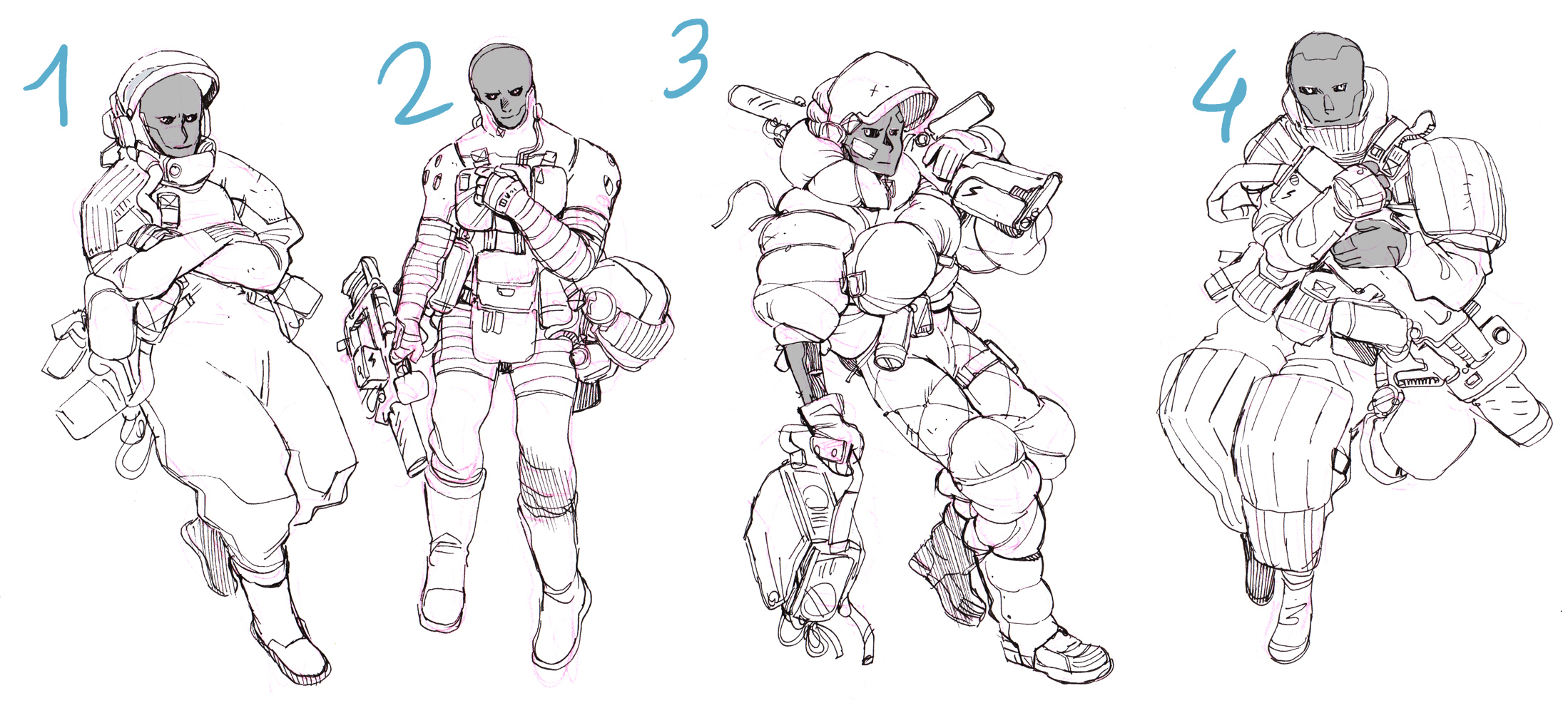
“I think it helps that I was an illustrator and spent a lot of time drawing, so I think we're able to kind of speak a familiar language,” notes Gareth, adding that the process was even smoother for the sequel. “I can pretty much just say a character looks vaguely like this, and I know that Guillaume knows exactly all the rules and all of the things that Citizen Sleeper needs, and how to make things work. And then all the rest of the art in the game is all done by me.”
That art includes the many, many space stations and spaceships that populate the expanded world of Citizen Sleeper 2, which goes beyond the single setting of the original to encompass a swathe of outer space known as the Belt. Gareth says a big style influence was the art director and concept artist Nicolas Bouvier, also known as Sparth (read our interview on making VR games with Sparth). “He has this practice of painting often quite zoomed out views of spaceships next to environments,” they say. “And there's something incredibly inviting [about them], despite the cold science fiction vibes of his work. Like you feel like it would be exciting to live there.”
The simple shapes and colours of Sparth’s work fitted well with the aesthetic Martin was trying to create. “There's not tons and tons of detail, but he's very good at creating a space that you look at and you're like, ‘I wonder what's happening in there?’ Which is exactly what I need for Citizen Sleeper, because I never get to put people inside a room.”
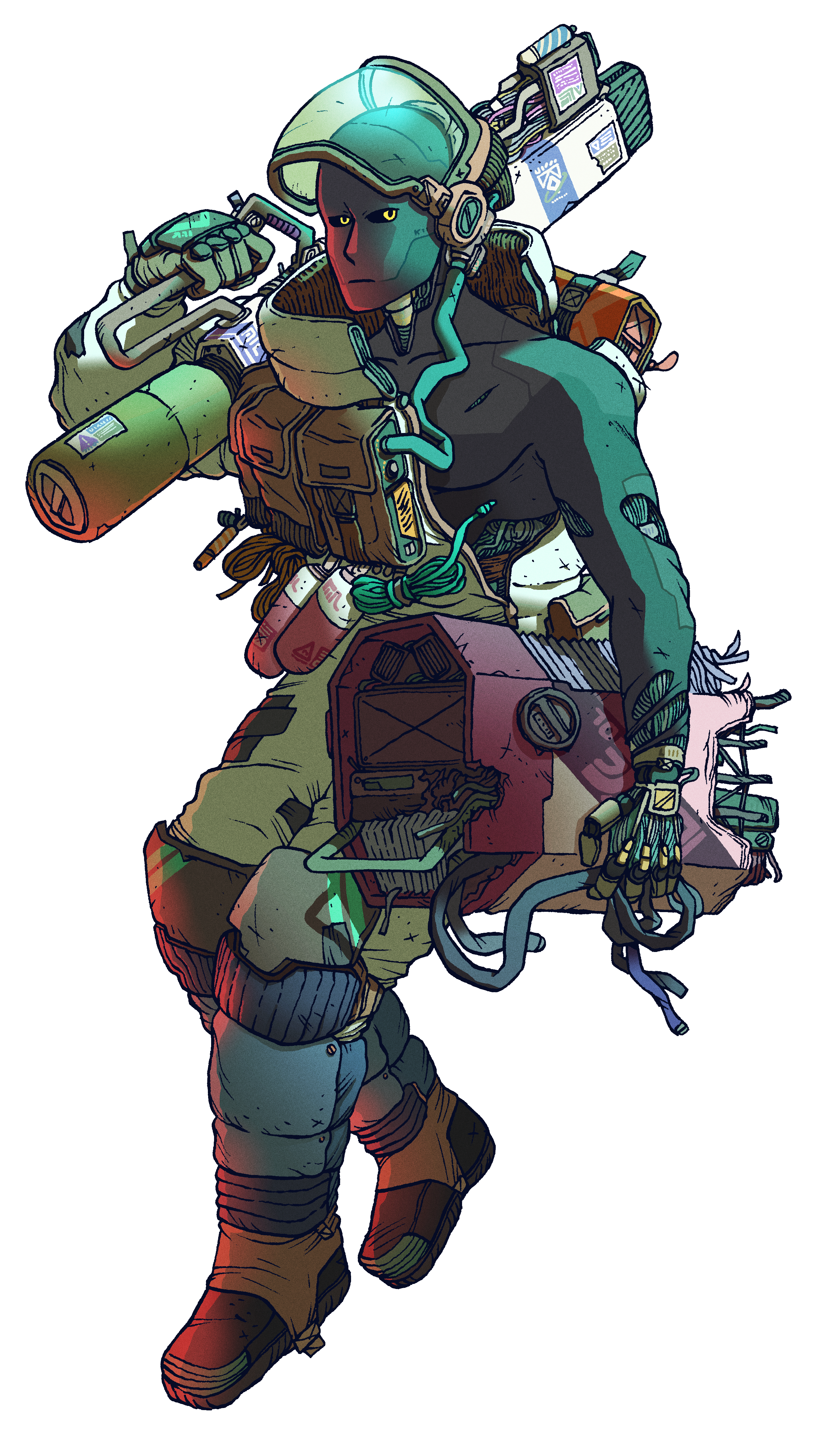
One difficulty Gareth faced is that Citizen Sleeper’s space stations are viewed both at both long distance and close up. “When you're zoomed all the way out, there's basically very little detail that you can see, but you when you get quite close, I need there to be enough detail that it doesn't feel flat or empty,” Gareth says. “So that was a big struggle.”
The solution partly involved smoke and mirrors. “I almost paint with the light a little bit, kind of layer things on top and use a lot of tricks,” Gareth says. “There's a lot of fake lighting in in Citizen Sleeper. If you actually looked at the lighting, then you’d realise none of it makes any sense. But doesn't matter, because it's about producing an image that's attractive or interesting.”
There’s also an intentional economy to the visuals. “Too much detail can often be a bad thing,” Gareth says. “When I first started making Citizen Sleeper 1, I actually had a higher detailed version of the station where there were more hand-drawn textures, and it looked much more like comic book art. And it was just too much. It just didn't work at different scales.”
Mixing complex Blender scenes and 2D art
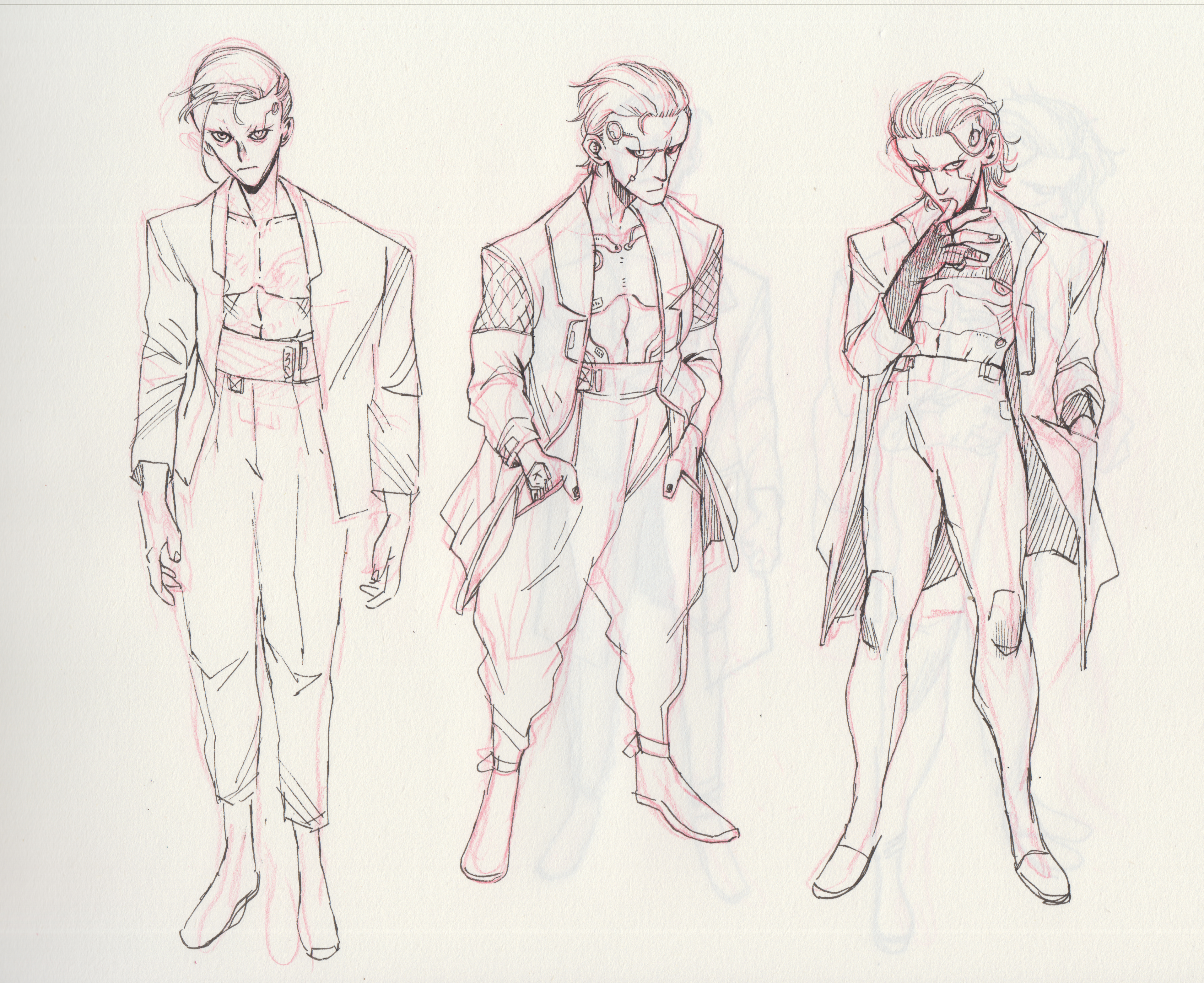
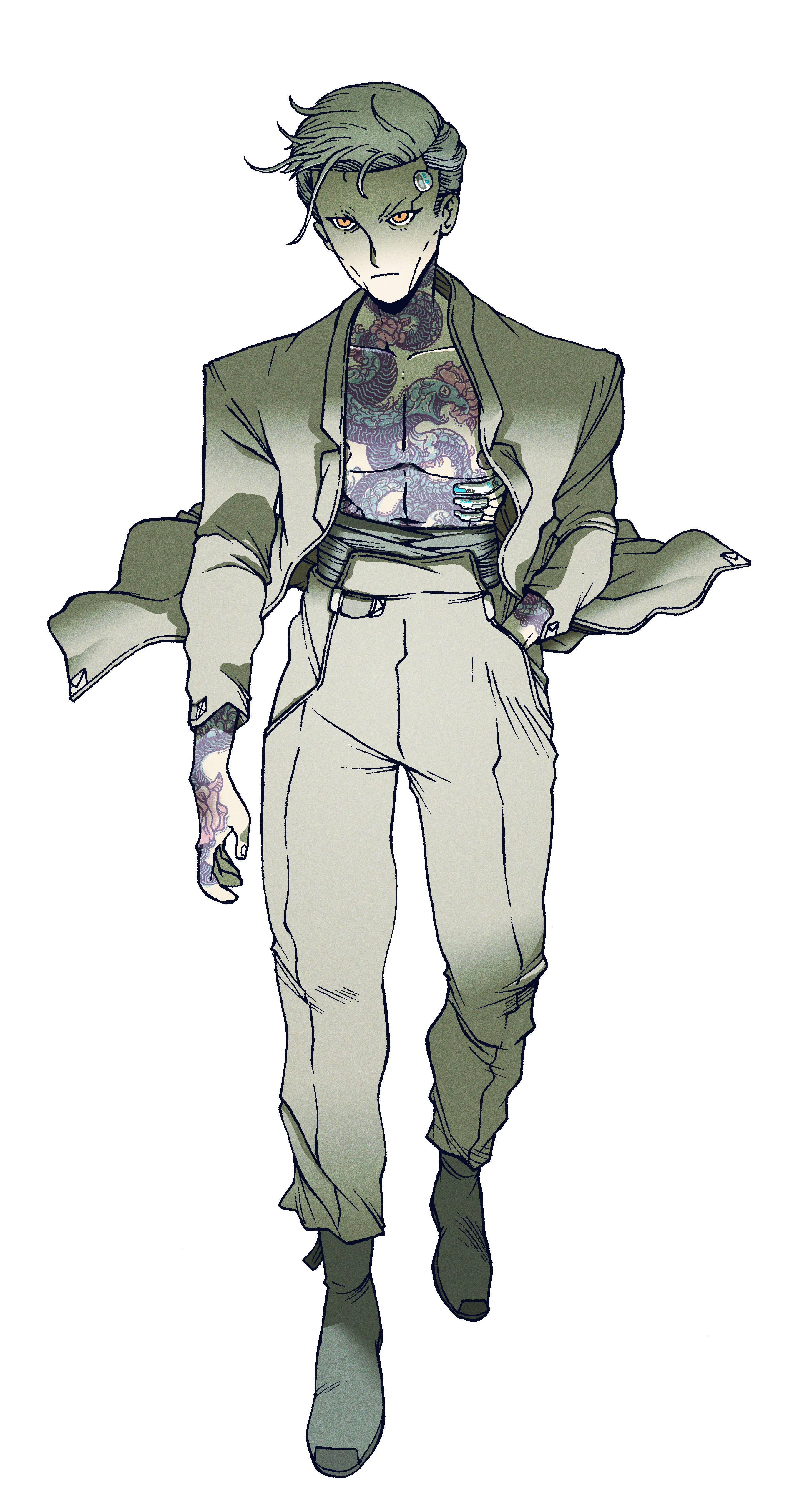
Gareth’s economical 3D backgrounds, created in Blender, contrast sharply with Singelin’s detailed 2D character art: but the combination works thanks to certain similarities. “The lighting, for example, in the background is quite similar to the way that Guillaume’s lighting is,” says Gareth. “Guillaume has a lot of soft gradients in his lighting style. So I think we managed to make them rhyme in the end, so that they hold together.”
They add that it’s important to think about the complete image rather than individual levels of detail, noting that some AAA games strive to make every object “the most detailed model possible”, which can make games “almost unreadable”. They argue that this makes it harder to convey information, to signal which items are important and which are just background: a problem that ends up being solved with things like yellow paint to indicate interactive scenery: “You've almost got an additional layer of art on top to fix the problems with the additional layer of art.”
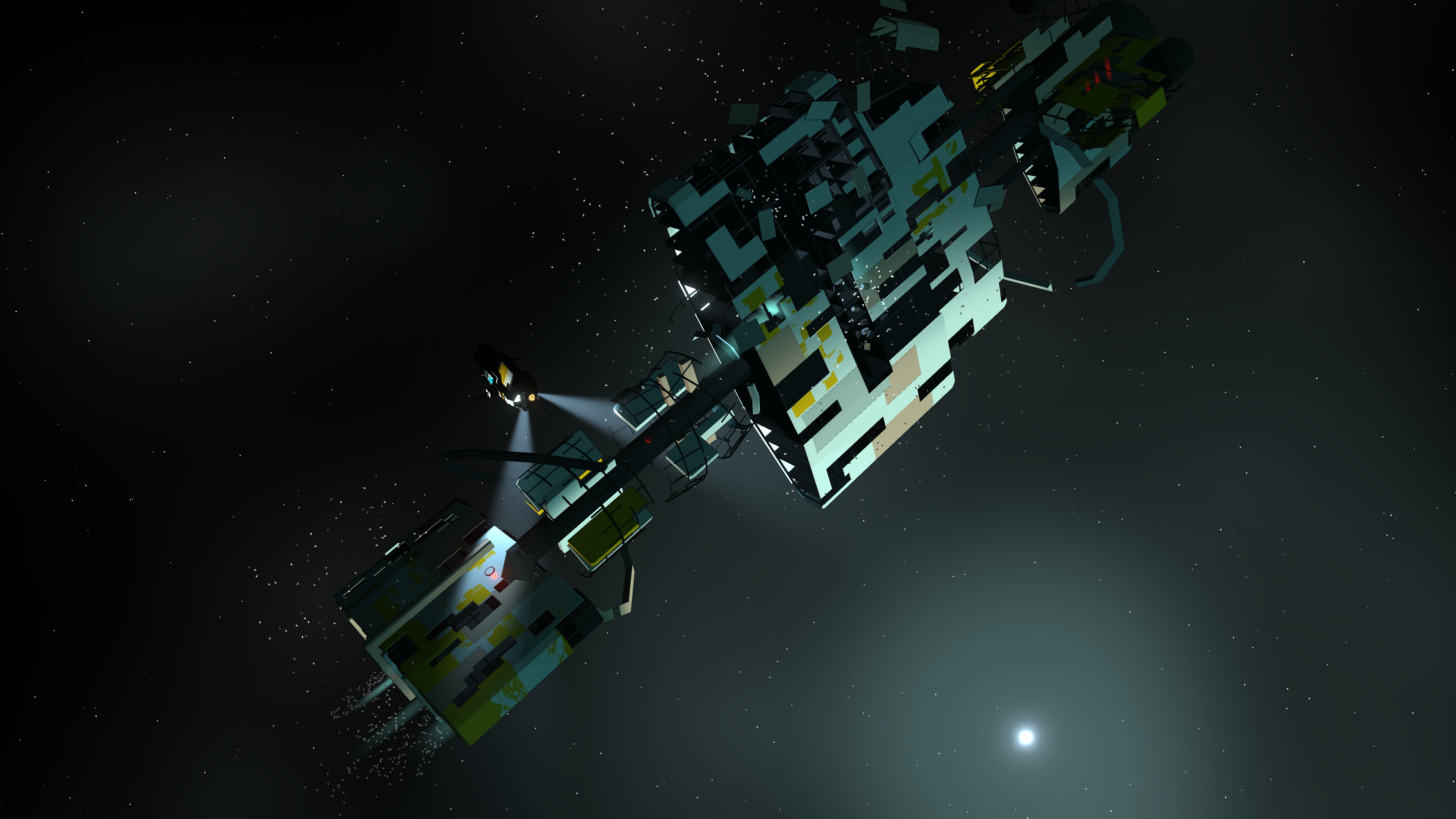
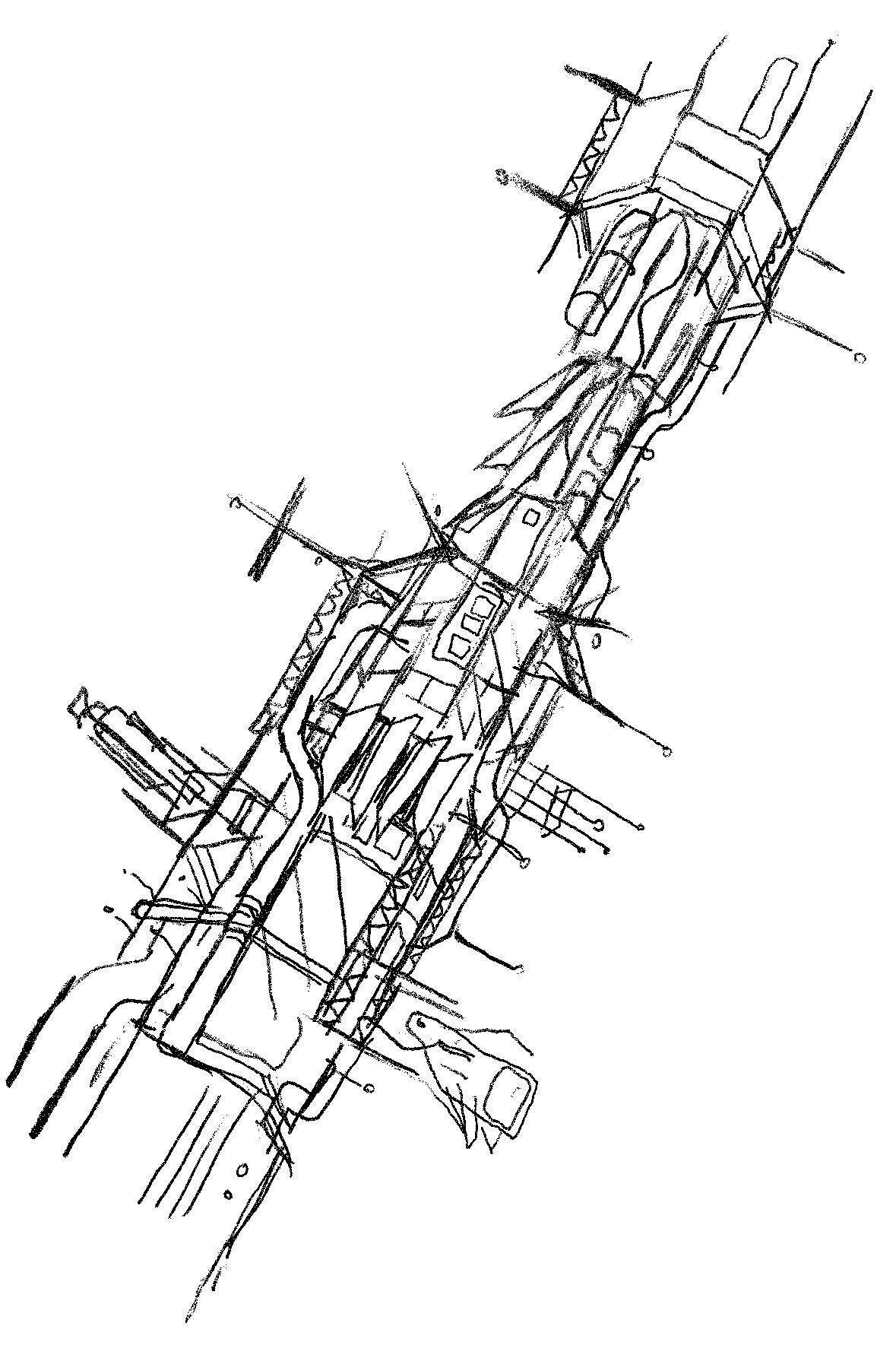
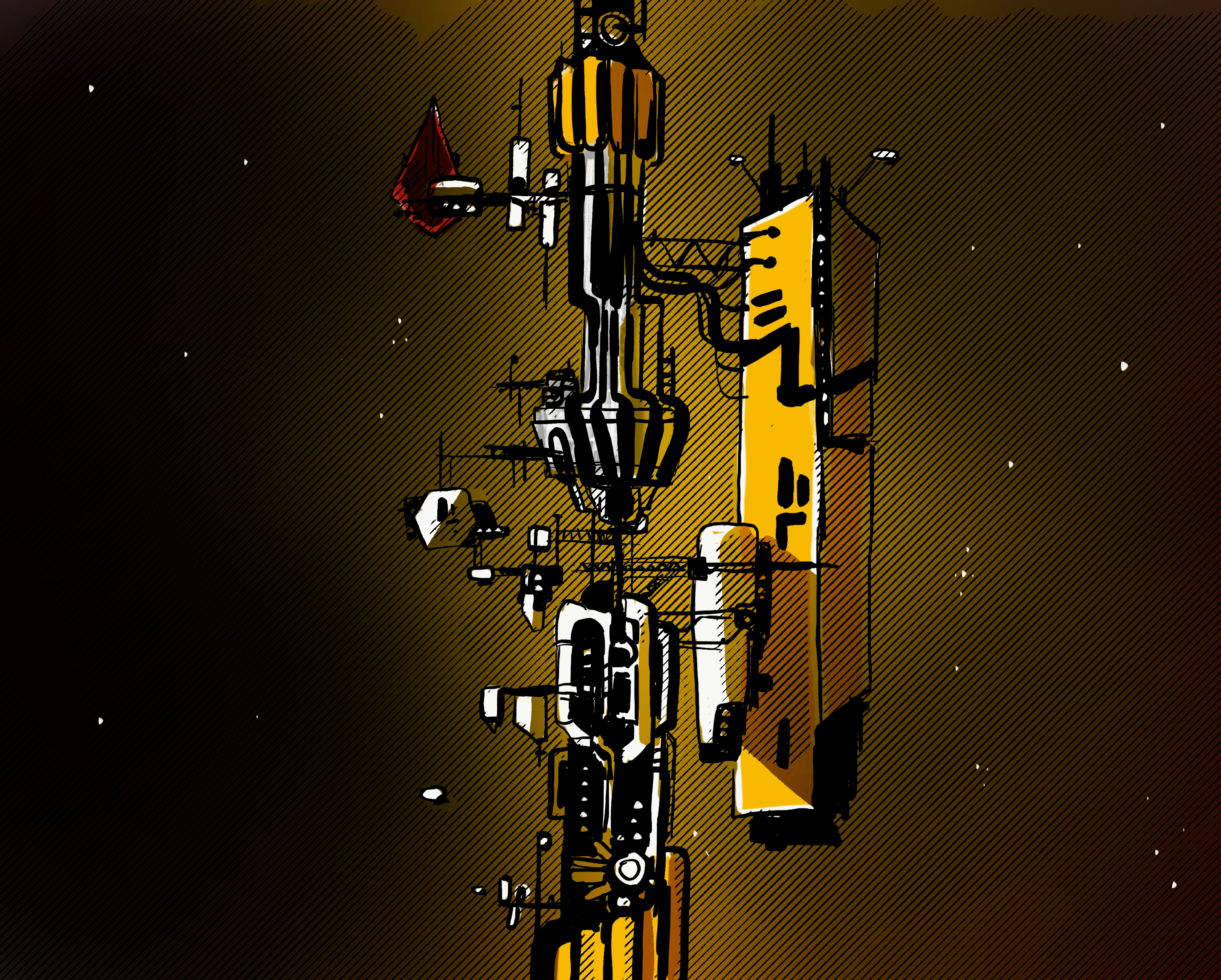
Looking back at the Citizen Sleeper games, it’s remarkable to think of the expansive virtual world Gareth has created without the use of traditional programming. It’s a testament to their skills, imagination and tenacity, but it’s also the result of playing to their strengths: which is the one piece of advice Gareth would offer to would-be indie developers mulling their first project.
“You've got to think very cleanly about what it is that you really are good at, and try to build a project around that, rather than try to build any kind of ideal project,” they counsel. “Try to build something as light as possible and as efficient as possible, and with realistic, achievable aims.”
“Generally, I recommend that people try to think about a good idea that they believe in, and that they feel they can make, and that they could stand to make over two to three years – that they won't get bored of. It’s got to have some kernel of something that you really are obsessed with or love: otherwise, I don't think it's going to happen.”
Citizen Sleeper 2 releases 31 January for Steam, GOG, PS5, Xbox and Nintendo Switch, visit the Fellow Traveller website for more details and artwork. Read our guide to the best laptops for game development if you're an artist keen on creating your own worlds.







